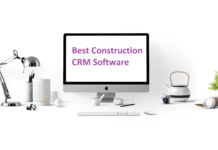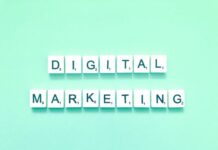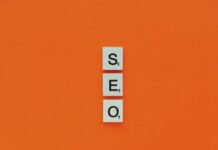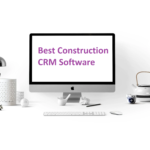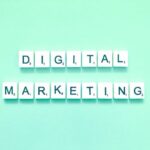The email sequence provides a fantastic business opportunity, but you cannot be certain of the correct and incorrect approaches. Sequences significantly impact sales and conversion rates, but they must be used correctly. For instance, a sequence is not simply a collection of messages slapped together, as with anything scalable. You need to be organized for its advancement. Over a billion people utilize email marketing, which has been demonstrated to be the securest and most efficient method. Your sales and marketing efforts will soar thanks to the powerful sequences. Your company can significantly influence the results by utilizing the email marketing channel with just your work. You have undoubtedly prepared a few carefully-structured messages if email marketing is your business’s preferred method. For example, you need to plan to create highly tailored sequences. Let’s see more about them in the following points:
Read About: The 4 Best Web Hosting Sites For eCommerce Stores.
What is an email sequence
A email sequence is a succession of automatically generated emails you send to specific subsets of your email contact list. Drip campaigns may be familiar to you. Sequences and dribbles go together. Think of the leaky tap that you were never quite able to stop dripping, such as email 1, email 2, email 3, etc. It is often safe to leave established sequences alone. However, you can still go back and make a few tiniest changes here and there, whether you want to reorganize the emails or change the subject line of one.
How to create an Email Sequence
1. Establish the details:
Earlier you start structuring sequences, check to see whether your email marketing software has limits on the quantity of emails you may include in a sequence. If so, check into potential solutions. Determine the number of emails in your series once you receive the data. Furthermore, decide how frequently you wish to distribute each. As soon as you start writing, use a reply-to email address so readers can instantly contact you if necessary. For example, assistance agents who say sorry for inconvenience may think they are solving the issue but are just beginning to scratch the surface. Customers genuinely feel disregarded.
2.Consider the beginning:
Your letter has been received and read. Save them at once. Even though you don’t have the full 30 seconds, consider it an elevator pitch. It takes a brief moment to grab a reader’s interest and keep them reading. Focus on the email’s goal and be compelling while doing so. Use the opener you have.
3.Decide on your goals:
Before you begin creating them, you must choose what you want readers to do and clearly understand what you aim to achieve with each email series. If you are going to entice new clients, have a look at tripwire marketing, for instance. With this tactic, products and services are marketed at lowered prices rather than offering a free deal that consumers could deem to be an impossible bargain. If leads become paying clients, it is hoped that they will subsequently spend more money. Even if you would want to make a rare sequence, give the ones that will help you the most precedence. Utilise techniques like split testing to see which combinations of the pieces in your proposed sequence will aid in achieving your goal.
4.Use current content:
The advantage of automated email sequences is that they save time. The need for manual dispatches is reduced, and productivity increases. Avoid anything that will need regular changes or go out of date quickly. Refrain from bringing up current events, recent news stories, or trends. Be mindful not to use words or phrases like recently, this year, and lately. Create sequences that will stand the test of time
5.Customize the sequence:
One of the most effective processes for you is developing an outreach message. After determining your target audience and the number of emails you will send, you may establish a communications sequence. Although it may be helpful to use a basic template, you should make changes to make it more individualized for the user. Create personalized emails for each recipient, and they will feel appreciated. For example, not only may saying sorry for inconvenience come across as lazy, but if your customer care employee starts to use it frequently, they may seem even lazier.
Types of email sequence
1.Nurture sequence:
Any email sent to a recipient can be a part of a nurture email series. Messages of welcome or information can be used in this approach. In the sales funnel, for instance, visitors who sign up for your offers from your landing page must travel through a number of steps before reaching the endpoint. These processes include everything from creating an account to making a transaction. For some of these processes, it could be required to provide information. For example, to sign up to get notifications about new products, one may be requested to deliver their name, email address, phone number, etc.
2.Engagement sequences:
Engagement sequences are meant to stir reader’s curiosity about what you have to offer. For instance, send a welcome email to someone who joins your mailing list at the start of a business-to-business sales process. These brief interaction sequence requirements are meant to make your audience laugh. Using these sequences is a great way to set your email apart from the competition. They can be employed either before or after conversions. Still, generally speaking, it is better to utilize them at any time rather than immediately before one because doing so could come off as spam and turn people off completely.
3.Conversion email sequence:
You have fed and engaged your audience, and now it is time to hit the conversion home run. Recognize the most significant challenges to your audience before using marketing resources to complete the purchase, such as case studies, ebooks, etc. You have expanded your audience and are ready to dazzle them with outstanding marketing materials. You must pay close attention to the audience’s requirements and demonstrate your concern for them by providing them with relevant resources. It may take a short time and effort, but it is worthwhile.
Bottom line:
Using email sequences, leads can be effectively turned into customers. With the help of a sequence built by adopting the right tone and providing helpful content, your potential customers may move through the purchasing process. Using the follow-up points discussed above will help you increase sales and improve email conversion.
Read About: Graphic Design Tips That Will Make Your Work Stand Out




